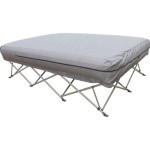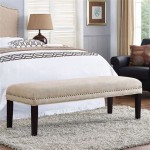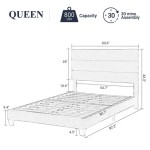Are Bed Rails Illegal?
Bed rails, also known as bed safety rails, are often used to enhance safety and prevent falls for individuals. They are particularly common in situations where a person is at risk of falling out of bed, such as for elderly individuals, children, or people with mobility issues. However, the legality of bed rails can vary depending on the specific context and jurisdiction. This article will explore the factors that influence the legality of bed rails, including safety concerns, regulatory frameworks, and legal implications.
Safety Concerns and Regulations
The primary concern regarding bed rails is their potential to create a safety hazard. While they are intended to prevent falls, there is a risk that individuals could become trapped or entangled in the rails, leading to injuries or even suffocation. Regulations and guidelines regarding bed rails are often developed to address these safety concerns.
For instance, the United States Food and Drug Administration (FDA) has issued guidelines for the design and manufacture of bed rails, emphasizing the need for proper spacing, strength, and stability. Additionally, healthcare facilities, such as hospitals and nursing homes, often have their own internal policies and procedures regarding the use of bed rails, taking into account patient safety and best practices.
Legal Implications of Bed Rail Use
The legal implications of using bed rails can be complex and depend on several factors, including the specific context, the individual's capacity to consent, and the potential for harm.
In some cases, the use of bed rails without the informed consent of the individual may be considered a form of restraint or involuntary confinement, potentially raising legal concerns, particularly if the individual is capable of providing consent.
Furthermore, if the use of bed rails results in injury or harm, there may be legal repercussions, such as negligence claims. For instance, if a person falls out of bed due to a malfunctioning bed rail, the manufacturer or the individual responsible for its maintenance could be held liable.
Factors Influencing the Legality of Bed Rails
The legality of bed rails is influenced by a number of factors, including:
- Jurisdiction: Laws and regulations concerning bed rails can vary significantly from one jurisdiction to another. Some jurisdictions may have specific regulations regarding bed rails, while others may have more general guidelines related to patient safety.
- Setting: The setting where bed rails are used can also affect their legality. For example, there may be different regulations governing the use of bed rails in hospitals, nursing homes, private residences, and assisted living facilities.
- Individual's Capacity to Consent: The individual's capacity to provide informed consent is a crucial consideration. If the individual is unable to consent or their consent is not freely given, the use of bed rails may be deemed unlawful.
- Type of Bed Rail: The type of bed rail used can also be relevant. Some bed rails are designed for specific purposes, such as preventing falls from hospital beds, while others are intended for general use. The design and intended use of the bed rail may influence its legality.
It is crucial to consult with legal and healthcare professionals to determine the legality and appropriateness of using bed rails in specific situations.

The Unspoken Dangers Of Bed Rails For Seniors Thistle Law Firm

Bedrail Injuries In Nursing Homes How These Happen

Legal Considerations When Using Bed Rails In A Skilled Nursing Facility

Gui For The Installation And Maintenance Of Bed Rails

Dangers Of Bed Rails Alf Regulation Florida

Feds Warn Not To Use Bed Rails Blamed For At Least 3 S Cbs News

The Unspoken Dangers Of Bed Rails For Seniors Thistle Law Firm

Is It Better To Use Bed Rails Or Low Beds With Sensor Mats Ocare

Bed Rails Management And Safe Use Gov

How To Safely Use Bed Rails In Care Homes







